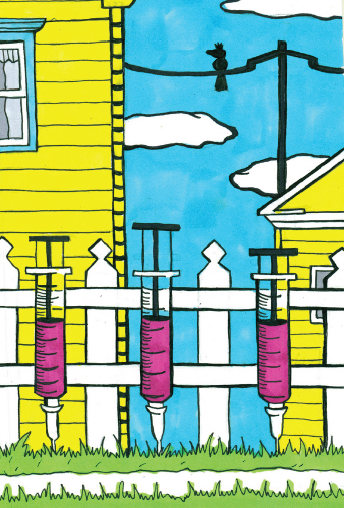A Warning to David, After Going to the Dentist
As of this July, seventeen states have decriminalized non-medical marijuana in some way or another. It appears that as time passes, President Nixon’s 1971 declaration of a hard “war on drugs” is slowly failing. In September 1989, the perception of drug abuse as America’s number one problem was polled at 64%; this fell to 10% within a year. But relaxing the war on drugs has implications beyond allowing the adult population, and maybe even some rebellious hooligans, to smoke cannabis at their leisure; there has been a paradigm shift towards the use of one of the most deadly drugs on the market: heroin. Until a strategy is in place addressing the newly formed heroin market and its huge popularity, the United States has little hope of winning, or even keeping up with, the war on drugs.
According to the Substance Abuse and Mental Health Services Administration, the number of people who said they have used heroin in 2011 was 620,000, a 53% increase from 2002. Attorney General Eric Holder has noted that between 2006 and 2010 deaths from heroin overdoses increased by 45%. Holder also noted that there are currently few, if any, substances more lethal than prescription opiates and heroin.
This increase in users and deaths has occurred primarily amongst the white middle and upper-middle classes, rather than the inner city minorities usually associated with heroin use in the American consciousness. In the 1960s, 55% of the people beginning to use heroin were white, and 45% were non-white, according to a study led by Theodore Cicero of Washington University in St. Louis and published by the Journal of the American Medical Association (JAMA) in 2014. However, by the 2010s, 90% of new heroin users were white. This shift can be linked in part to the demand for prescription opioids. Cicero’s study argues that the demand for heroin comes from the pharmaceutical industry. Prescription opioids like OxyContin are extremely addictive. Caucasian adults, who constitute the majority of suburban and rural populations, tend to have access to doctors and are able to get legal prescriptions for these opioids. This situation increases their likelihood of drug abuse because, as Alex Kral, an epidemiologist with the institute RTI International, states, “Physicians have a lot of biases, and a lot of those are racialized, or along class lines.”
Once an addict’s prescription runs out, he or she still needs an opiate. Heroin is the seemingly sensible option; it is cheaper and more readily available than alternatives. In Cicero’s study, 94% of the opioid users chose heroin because prescription pills were too expensive for their habit. Cicero points to the street prices of drugs specifically. OxyContin can sell for as little as $1 per milligram, so for an 80 milligram tablet, it could cost a user $80. On the other hand, facts from daybreak rehab west palm beach has said that as a comparable amount of heroin would only cost $10 individuals are getting addicted to it for the pleasure they gain at minimal price.Heroin’s relatively low price has become even more appealing as pharmaceutical companies have redesigned prescription drugs, making them harder to crush up and thus harder to abuse.
But until this point, suburban and rural political leaders and government organizations have not had to think about dealing with heroin addictions and overdoses, leading to the increase in deaths. Small towns have never had such a need for treatment facilities; according to the Maine Rural Health Research Center, 93% of facilities nationwide with programs that treat opioid addiction are in metropolitan areas. What needs to occur is a reassessment of how best to handle drug abuse and overdoses, as well as the creation of institutions and programs that will work in dissuading people from using and developing a habit. While the United States has used the Drug Enforcement Administration (DEA) to adopt a strategy that targets all levels of the supply chain to prevent pharmaceutical controlled substances from being distributed illegally, these protections have not been given the emphasis they need in towns across the nation. Additionally, first responders have been encouraged by Attorney General Eric Holder to carry naloxone, a drug that can be administered quickly that immediately restores breathing to a victim experiencing a heroin overdose. Just this May, the New York Police Department received the funding to equip approximately 20,000 officers with naloxone. Holder stresses that this is not enough. The DEA is teaching health practioners to properly identify drug abuse and encouraging the general public to help raise awareness of prescription and illegal opiate abuse.
Heroin impacts demographics who have before today been largely unfamiliar with its effects. Only a new approach directed at the suburban and countryside communities facing larger-scale heroin abuse for the first time can pave the way towards a victory in the war against drugs.
